Bats In Ohio
This post contains links to affiliate websites, such as Amazon, and we receive an affiliate commission for any purchases made by you using these links.
There are 14 species of Bats in Ohio. Find out about these 14 species, their identifying characteristics, habitats, and more.
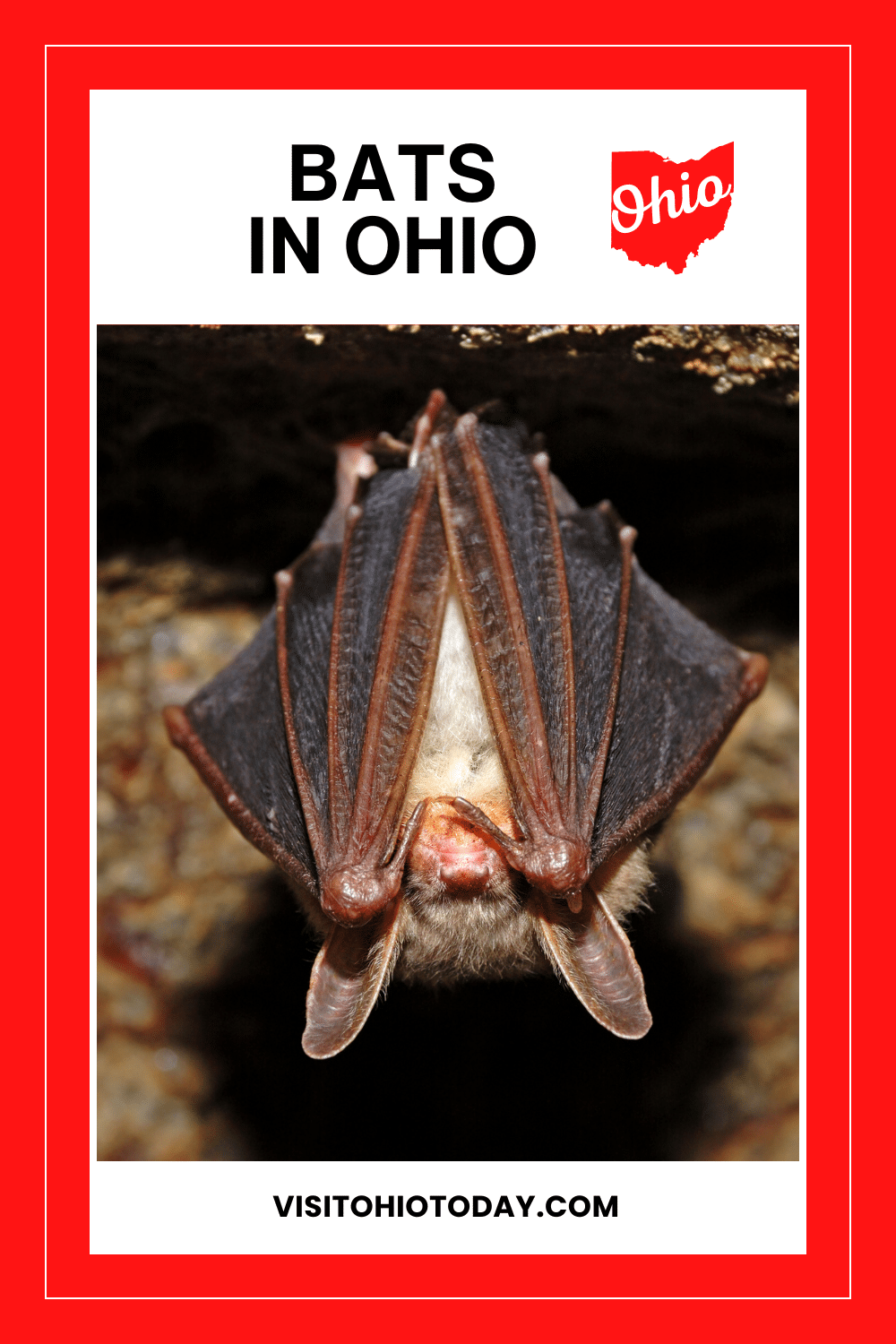
About Bats in Ohio
There are over 1,200 species of bats worldwide. Bats are the world’s only flying mammals and have a very long history on our planet. Some fossils date back over 50 million years. 14 species of bats live in Ohio.
Bats live in hibernating habitats in the winter and roosting habitats during the warmer months. Bats can enter buildings through doors, windows, or even the smallest cracks. The summer season is when we are more likely to see bats as this is when they roost. During the summer, pregnant females of most species will roost in colonies in caves, rock crevices, and trees. Babies are usually born in May and June.
Bats are beneficial to the ecosystem as they feed on many agricultural pest insects. Every bat eats between 2,000 and 6,000 flying insects each night.
Cindy’s Insider Ohio Tips!
Bats can live for more than 30 years and can fly at speeds of more than 60 mph. More than half the bat species in the US are in severe decline or are endangered – loss of habitat along with a disease called White Nose Syndrome have caused this. You may be surprised to know that bat droppings (called guano) are one of the richest fertilizers.
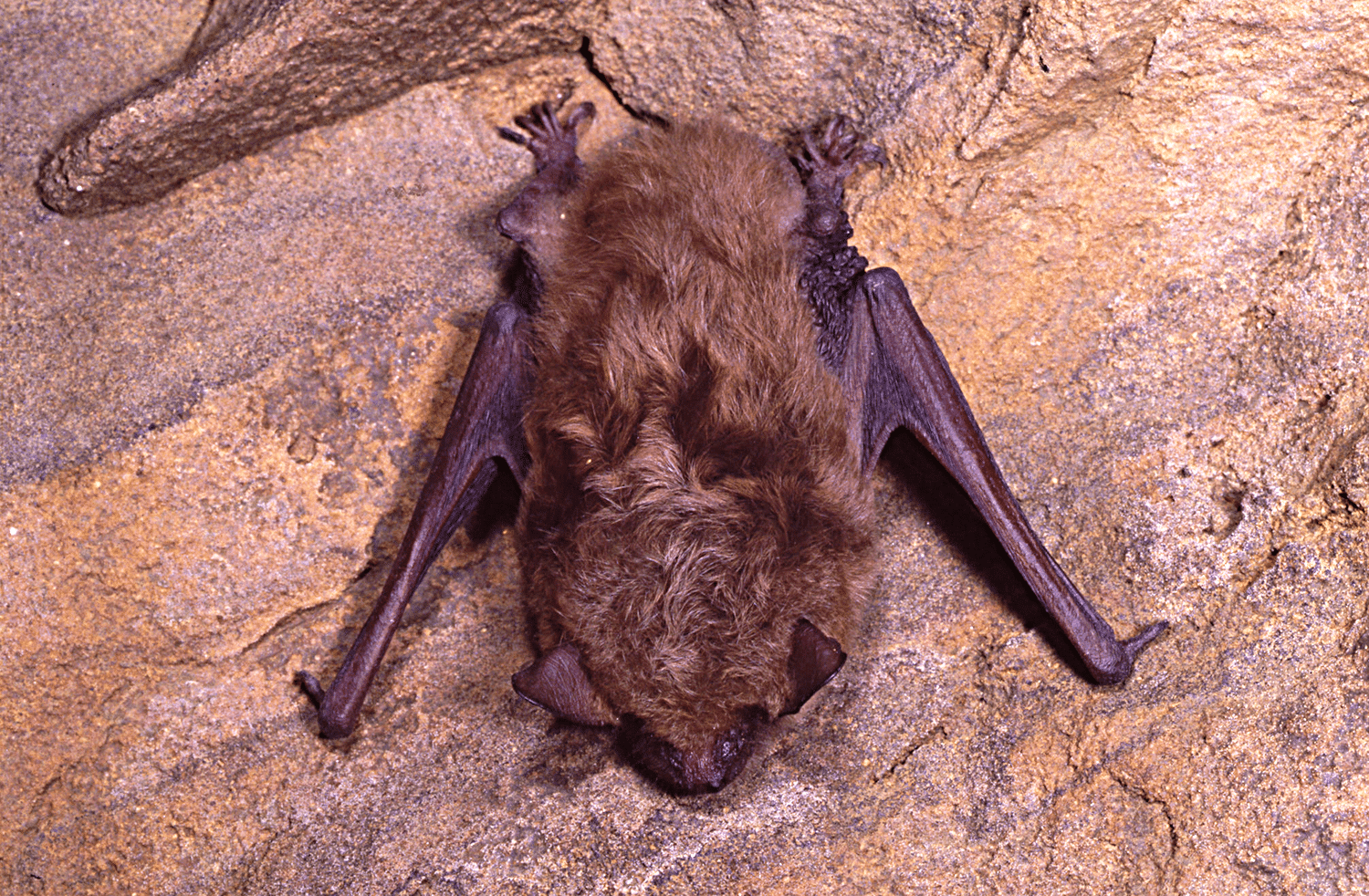
Big Brown Bat
Eptesicus fuscus
- Characteristics: Reddish-brown coat and a puffy nose
- Hibernation habitat: Attics, shutters, trees, and bat houses
- Roosting habitat: Mainly trees
- Wingspan: 13 to 14 inches
The big brown bat is one of the most common bats in Ohio. The females set up colonies in trees in the spring months. These colonies can vary in size from 50 members to over 500 members. Males roost in small groups of 5 or less. In the summer months, this species of bat will come out of their roosts about 20 minutes before sunset to hunt.
Little Brown Bat
Myotis lucifugus
- Characteristics: Reddish-brown to dark brown coat
- Hibernation habitat: Caves of Southern Ohio
- Roosting habitat: Cabins and attics
- Wingspan: Approximately 10 inches
The Little Brown Bat is common throughout the state of Ohio and they can also be found all over North America. These cute individuals can be seen over lakes and ponds. These bats live in large colonies with thousands of members in one colony. In the winter months, these bats will migrate to the large cave systems of Southern Ohio.
Eastern Red Bat
Lasiurus borealis
- Characteristics: Red color with white markings on the shoulders
- Hibernating habitat: Migratory – their winter habits are unknown
- Roosting habitat: Trees
- Wingspan: Approximately 12 inches
The Eastern Red Bat is solitary, only gathering together to mate and to migrate. This bat also has unusual white markings on the shoulders which can make it look like a pine cone when resting in a tree. The Eastern Red Bat is North America’s most abundant tree-dwelling bat.
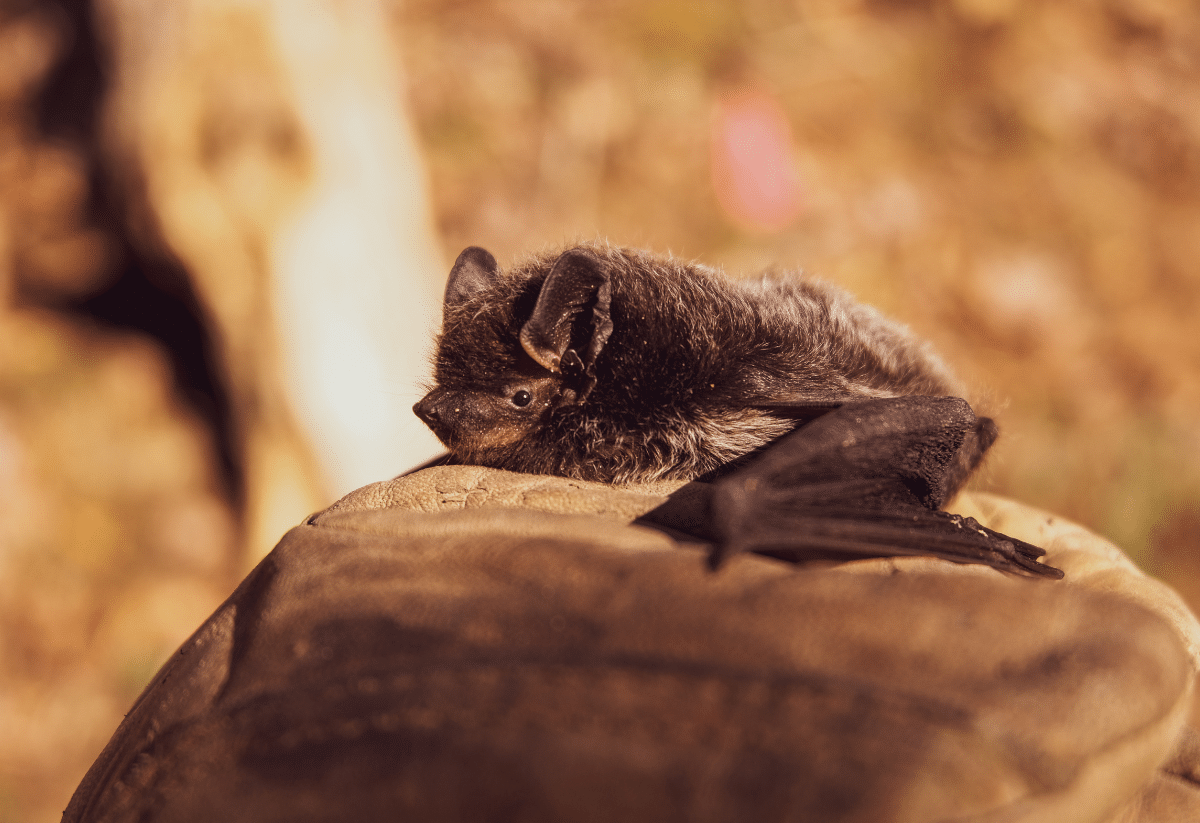
Hoary Bat
Lasiurus cinereus
- Characteristics: A yellow to orange throat and long, white-tipped hairs
- Hibernating habitat: Migrates south for the winter
- Roosting habitat: Mainly trees
- Wingspan: Approximately 17 inches
The Hoary Bat is rarely seen during daylight hours, it hunts when it is dark. This species is Ohio’s largest bat.
Tri-Colored Bat
Perimyotis subflavus
- Characteristics: Banded yellow and brown colors on their back
- Hibernating habitat: Caves
- Roosting habitat: Tree cavities, caves, and buildings
- Wingspan: 8 to 10 inches
The Tri-Colored Bat, one of the smallest bats in North America, was formally known as the Eastern Pipistrelle. These bats come out to hunt in the evenings and can be identified by their fluttering, erratic flight patterns.
Eastern Small-Footed Bat
Myotis leibii
- Characteristics: Long, brown fur
- Hibernating habitat: Caves or crevices
- Roosting habitat: Rock fields and rocky slopes
- Wingspan: 8 to 10 inches
The Eastern Small-Footed Bat is Ohio’s rarest bat. Only three specimens of this bat have been seen in Ohio in the last 10 years. Not too much is known about this secretive species. It does have a slow flight pattern and it has tiny feet.
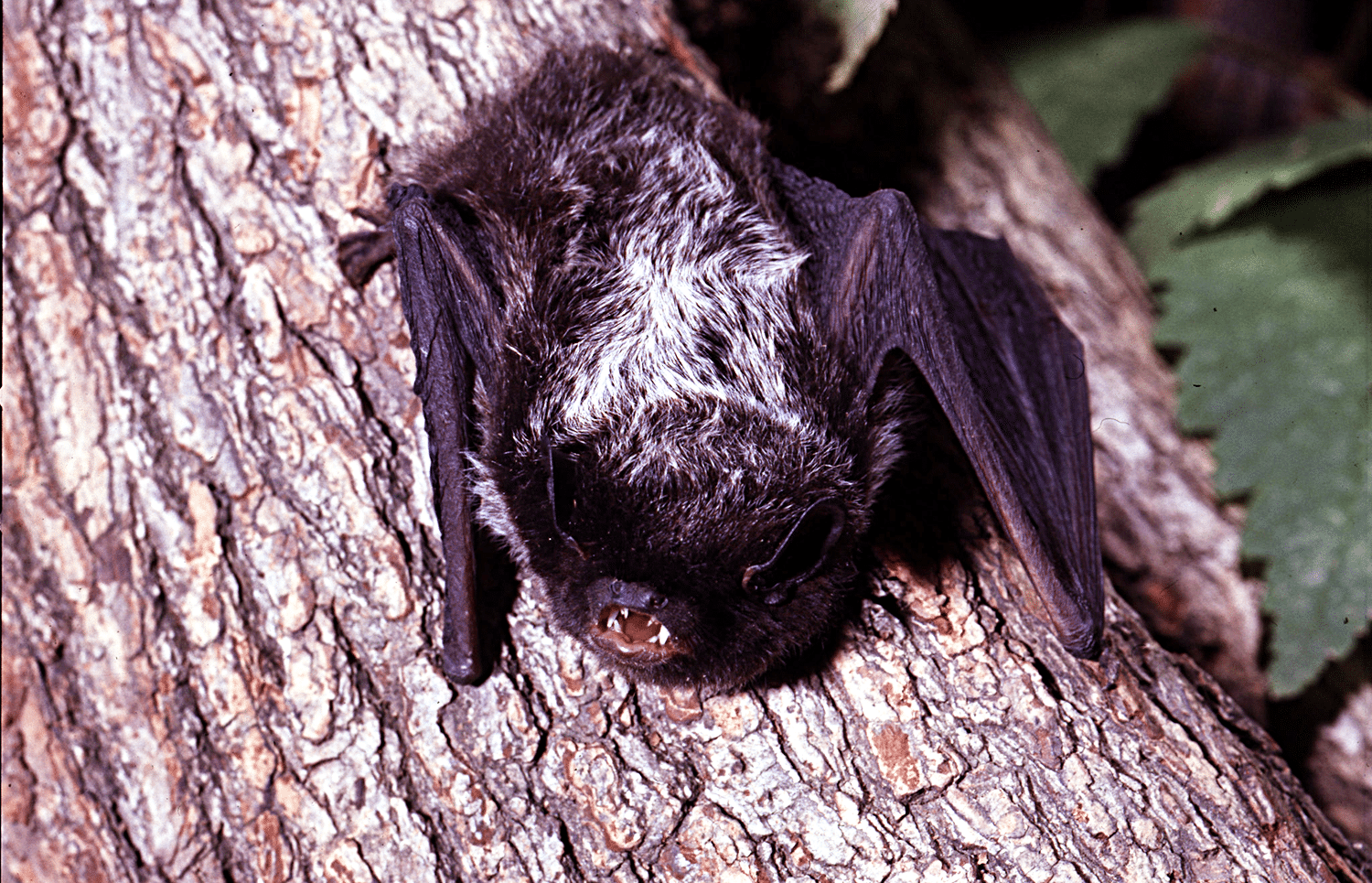
Silver-Haired Bat
Lasionycteris noctivagans
- Characteristics: Silver hair with black, white, and silver tips
- Hibernating habitat: Migrate south for the winter
- Roosting habitat: Old trees with loose bark, tall buildings, church steeples
- Wingspan: Approximately 11 inches
The Silver-Haired Bat may choose to hibernate in the loose bark of trees rather than migrate in the winter.
Indiana Bat
Myotis sodalis
- Characteristics: Gray coat with a pink tail membrane
- Hibernating habitat: Caves of southern Ohio
- Roosting habitat: Dead and hollowed-out trees
- Wingspan: Approximately 10 inches
The Indiana Bat is an endangered species at both state and federal levels, there are less than 300,000 of these individuals left on the planet. The Indiana Bat looks similar to a Big Brown Bat.
Evening Bat
Nycticeius humeralis
Characteristics: Bronze/brown fur on the back with lighter hair on the stomach
Hibernating habitat: Migrate south for the winter
Roosting habitat: Hollow trees, buildings, and attics
Wingspan: Approximately 10 inches
The Evening Bat is easy to confuse with the Little Brown Bat and the Big Brown Bat. This species of bat can be found in the middle and southern parts of Ohio.
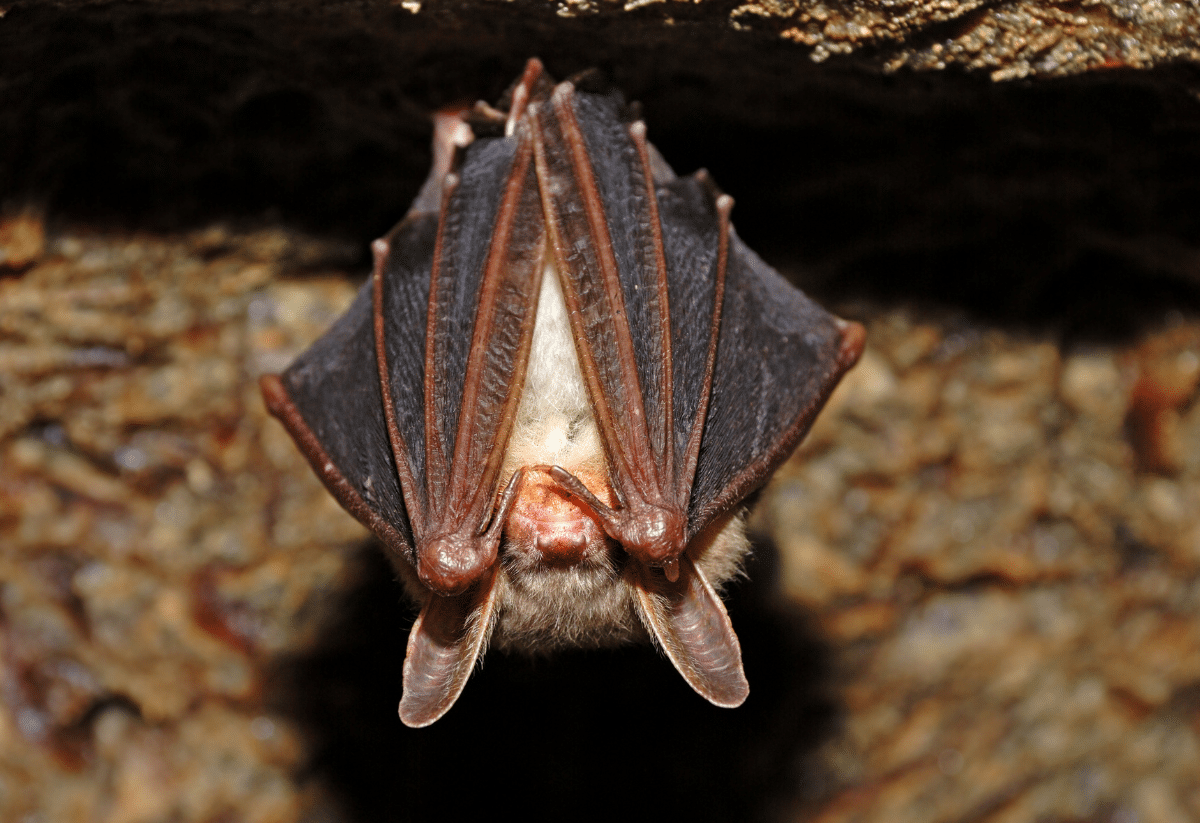
Northern Long-Eared Bat
Myotis septentrionalis
- Characteristics: Very long ears, dark brown coat
- Hibernating habitat: Caves
- Roosting habitat: Mainly trees
- Wingspan: Approximately 10 inches
The Northern Long-Eared bat was placed on the Endangered Species list in 2022. Standing dead or dying trees are very important for this species, however, they will use bat boxes.
Gray Myotis Bat
Myotis grisescens
- Characteristics: Gray fur, turning reddish in the summer
- Hibernation habitat: Caves of the Appalachian Plateau
- Roosting habitat: Warm caves
- Wingspan: 10 to 11 inches
Around 95% of the population of Gray Myotis Bats hibernate in just 9 specific caves each winter! In 1976, it was classed as endangered by the U.S. Fish and Wildlife Service. Since the listing, several maternity and hibernating habitats have been gated, leading to stabilized and growing populations.
Rafineque’s Big-Eared Bat
Corynorhinus rafinesquii
- Characteristics: Long ears, two large lumps on the nose, brown coat
- Hibernating habitat: Caves
- Roosting habitat: Trees in swamplands, old buildings, attics
- Wingspan: 10 to 11 inches
The Rafinesque’s Big-Eared bat is a rarely observed bat that can be found in Ohio, specifically in the Adams County area. This species is suffering a decline in numbers due to loss of habitat.
Townsend’s Big-Eared Bat
Corynorhinus townsendii
- Characteristics: Long ears, light brown coat
- Hibernating habitat: Caves
- Roosting habitat: Caves and buildings
- Wingspan: 12 to 13 inches
The Townsend’s Big-Eared bat is found throughout North America. There are two subspecies that are found in the central Appalachian and Ozark regions. They are very agile fliers and they forage for food after dark. This is another species that is suffering declining numbers through loss of or disturbed habitat.
Mexican Free-Tailed Bat
Tadarida brasiliensis
- Characteristics: Short, dense, brown coat
- Hibernating habitat: Usually migrate to Mexico for the winter
- Roosting habitat: Caves, bridges, and bat houses
- Wingspan: 12 to 14 inches
The Mexican Free-Tailed bat is present throughout the US, with a large colony in Southern Ohio. However, the largest colonies are in Texas. This bat can fly at speeds of more than 60 mph.
Spotting Bats in Ohio
If you found this post interesting, be sure to check out our other articles about Ohio animals – including Salamanders In Ohio, and Coyotes in Ohio.
Hello! We have done our very best to ensure that the accuracy of events, hours, addresses, etc, are up to date. Please know that information can change due to weather, updated health and safety challenges, etc. If you find incorrect information, please send us an email at [email protected], and we can get it updated.
To be updated and stay connected, subscribe to our newsletter.








